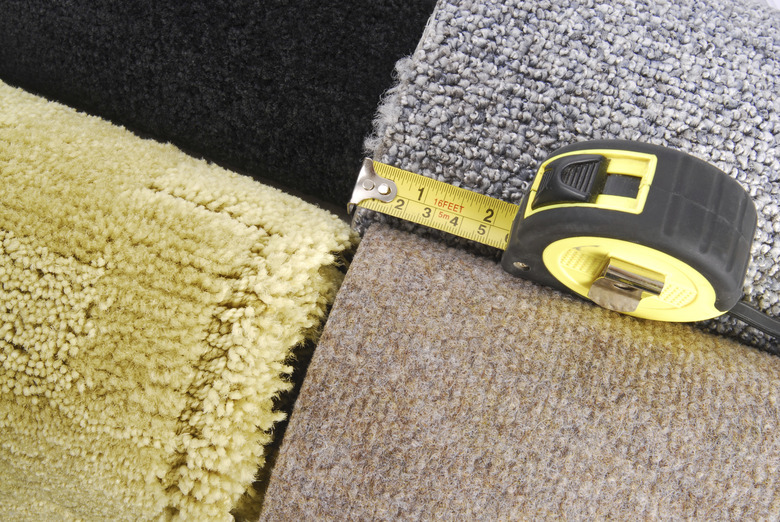How To Make An Area Rug Out Of A Carpet Remnant
We may receive a commission on purchases made from links.
Area rugs add color, texture and warmth to tile and hardwood flooring, but they can be quite expensive. Large area rugs can easily command a price of more than a thousand dollars. Finding the right size can also be challenging, especially for hallways and entryways.
Leftover carpet remnants from wall-to-wall carpeting provide an affordable solution to high-priced rugs. Don't worry if you haven't installed any carpeting lately – you can purchase discounted carpet remnants from carpet stores and home furnishing stores that sell carpeting. You'll also need some binding material to provide a finished look to the edges and keep them from fraying.
Things Needed
-
Tape measure
-
Carpet remnant
-
Marker
-
Straightedge
-
Carpet knife
-
Instabind carpet binding
-
Scissors
-
Hot glue gun with long nozzle tip
1. Measure and Buy a Remnant
Measure the area where you want to place the rug so you can purchase a carpet remnant big enough to make the rug. Home improvement centers often stock remnants on the floor of the store in different sizes, and specialty carpet stores also have a selection.
2. Trim Straight Edges
- Unroll the carpet remnant and place it face-down on a flat surface.
- Use a black marker and straightedge to mark the carpet backing where you want to cut it.
- Use the straightedge to guide your carpet knife as you cut the carpet to ensure a clean, straight cut. Make sure to protect the surface beneath the remnant
–
the knife may cut through and scratch the surface beneath.
- Trim the carpet edges using a straightedge and carpet knife to make all the sides perfectly straight.
Warning
Carpet knife blades are two-sided and very sharp, so use care when handling the knife.
3. Prepare the Binding Strip
Turn the carpet right-side up. Trim the end of a binding strip with scissors, and peel back a long portion of the paper on the flat, adhesive part of the strip.
Tip
When using rope binding, wrap a piece of clear tape around the rope before cutting to keep the rope from fraying. Once you have joined the two ends with hot glue and the glue is set, you can remove the tape.
4. Apply the Remnant to the Binding Strip
- Starting in the middle of one of the carpet's sides, place the back of the carpet on the flat binder adhesive, pressing down to adhere the binding to the underside of the carpet. About half of the binding strip should be exposed. Unroll the binding strip as you go along the carpet's edge, peeling back the paper as needed. As you peel the binding strip, fold it around the top of the unfinished carpet edge.
- Install the binding around the corner by making a cut in the flat part of the adhesive strip at the corner, aligned with the edge of the carpet. Do not cut through the piping
–
just bend it around the corner and overlap the sticky side on the back of the carpet.
- Continue to install the binding around the perimeter of the carpet piece until you reach the beginning.
- Trim the binding with scissors so that the beginning and ending edges touch.
5. Seal the Edges
- Seal the two binding edges with a spot of hot glue. Hold the two pieces together for several seconds until the glue sets.
- Use the long nozzle tip on the hot glue gun to add a 1/8-inch bead of glue between the piping on the binder and the carpet's edge. Hold the piping against the carpet's edge for several seconds while the glue sets.
Tip
If you need to join two pieces of carpeting together to make a long runner, use seaming tape. Seaming tape comes in two types, pressure sensitive, and heat bonding, which requires a seaming iron.
You now have turned an inexpensive carpet remnant into a useful area rug for your home.
